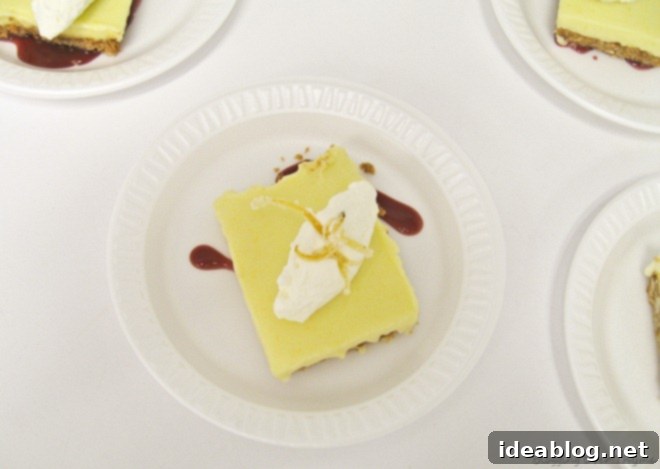Culinary School Chronicles: Mastering BBQ, Hand-Rolled Ravioli, and Classic Desserts in Phase I
Thursday marked a significant day in our culinary journey, serving as the second-to-last week of Phase I. It was a refreshing and notably more relaxed day in the kitchen compared to the high-pressure menu of the previous day. This session allowed us to explore diverse culinary techniques, from slow-smoked barbecue to delicate pasta making, all while fostering a collaborative and enjoyable learning environment. The anticipation of completing Phase I was palpable, lending an extra layer of enthusiasm to our practical exercises.
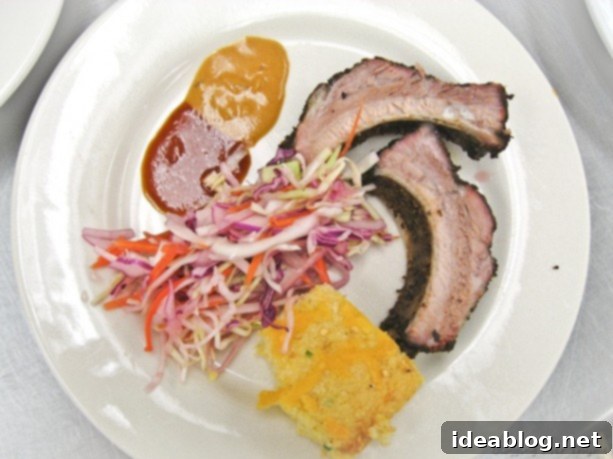
A Feast of Flavors: Crafting the Ultimate BBQ Spread
The core of our day’s menu centered around a classic American barbecue theme, featuring impeccably prepared homemade coleslaw, succulent baby back ribs, and warm, sweet cornbread. Each dish was designed to complement the others, creating a harmonious and deeply satisfying meal. Chef Brian, our esteemed instructor, generously shared his renowned dry rib rub recipe – a complex blend of various aromatic spices meticulously balanced with a hint of brown sugar. This secret ingredient is pivotal to achieving the rich, flavorful crust on the ribs.
The Art of Perfectly Smoked Baby Back Ribs
Our work on the baby back ribs began on Wednesday. After a thorough cleaning and preparation, we meticulously applied Chef Brian’s dry rub to each rack. The ribs were then allowed to rest for an hour or two, allowing the spices to penetrate the meat and infuse it with flavor. Following this crucial marination period, Chef Brian took the ribs home to embark on the slow-smoking process. He employed a combination of charcoal and fragrant shagbark hickory, which imparts a distinctive, deep smoky aroma and taste that is simply unparalleled. This low-and-slow smoking continued for several hours, patiently tenderizing the meat and building layers of flavor. On Thursday, the ribs returned to our kitchen, where they were transferred to the oven for an additional 5-6 hours. This final stage in the oven ensured they reached an extraordinary level of tenderness, practically falling off the bone with minimal effort. While I personally tend to shy away from ribs due to their often-fatty nature, these were an exception. The extensive cooking process rendered them incredibly tender and flavorful, demonstrating why they are such a beloved dish among barbecue enthusiasts.
Here are the ribs, glistening and ready for serving, promising a delectable culinary experience!
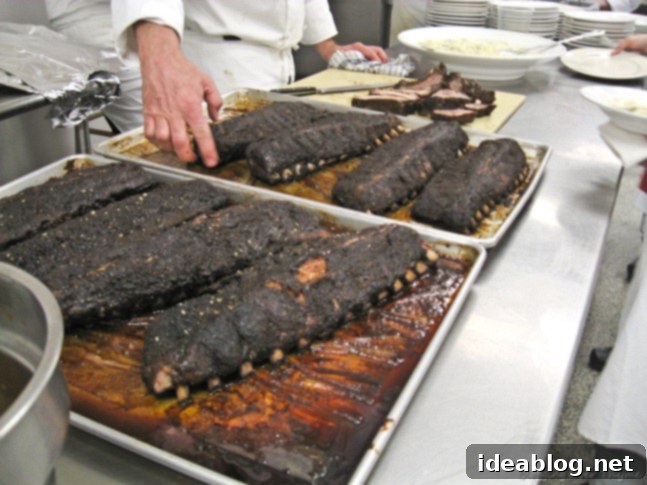
To accompany these magnificent ribs, we prepared a duo of homemade sauces: a zesty spicy mustard and a classic tangy BBQ sauce. These condiments were the perfect complements, offering a balance of heat and sweetness that further elevated the ribs’ rich flavor profile.
Refreshing Vinegar-Dijon Coleslaw
To cut through the richness of the ribs, we prepared a vibrant and crisp coleslaw. Unlike many traditional coleslaws, which often rely heavily on mayonnaise (a texture and taste I personally dislike), this version was a refreshing vinegar-Dijon based concoction. It was truly delicious and provided a much-needed acidic contrast to the rich, smoky meat. The preparation was straightforward yet effective: finely shredded green and red cabbage, thinly sliced red onion, delicate julienned carrots, and a touch of finely sliced jalapeño for a subtle kick. These fresh vegetables were then tossed in a dressing made from apple cider vinegar, water, a hint of sugar, and a spoonful of Dijon mustard. The crucial step to achieving its optimal flavor and texture is allowing it to sit and marinate for several hours. This resting period allows the flavors to meld beautifully and the vegetables to slightly soften while retaining their satisfying crunch.
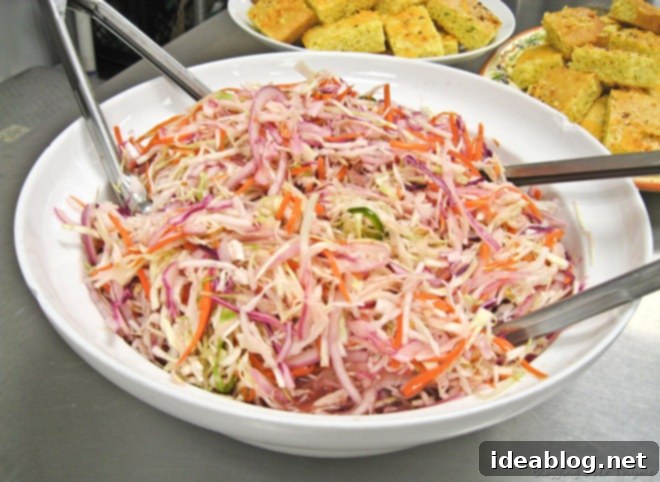
Sweet and Fluffy Homemade Cornbread
Continuing with our Southern-inspired barbecue lunch, we also baked a batch of Chef Brian’s irresistible homemade cornbread. This wasn’t just any cornbread; it was a delightfully sweet variant, crafted with a precise blend of bread flour and finely ground cornmeal, providing a wonderful textural contrast. A unique element was the inclusion of fresh roasted corn, which we painstakingly removed from the cob and processed to integrate its natural sweetness and moisture into the batter. To ensure an exceptionally fluffy and light texture, we carefully folded in whipped egg whites, a technique that incorporates air and prevents the cornbread from becoming dense. The result was a truly delicious and comforting side dish that perfectly rounded out our barbecue spread. Its slightly sweet profile and tender crumb were a testament to Chef Brian’s expertise.
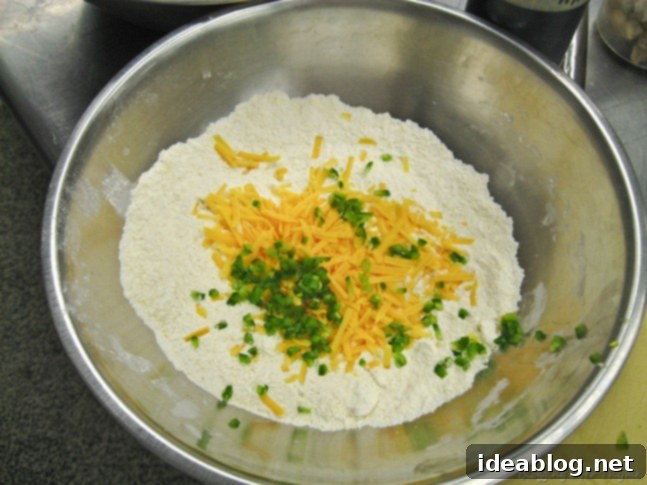
My classmate Tasha and I decided to personalize our batch of cornbread by adding some finely diced jalapeños and shredded cheddar cheese. This addition introduced a delightful savory and spicy kick, perfectly balancing the cornbread’s inherent sweetness and adding an extra layer of flavor and texture that we thoroughly enjoyed.
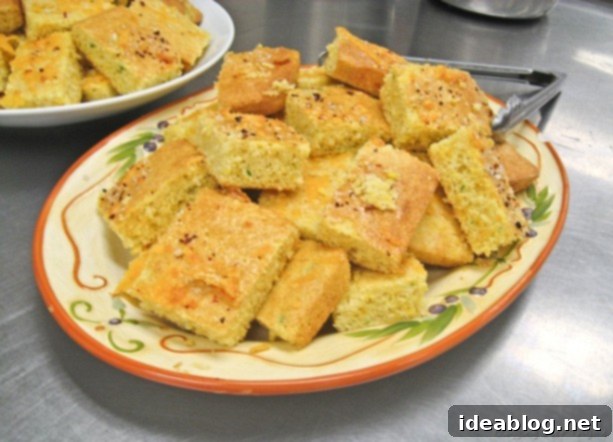
Exploring Classic Italian: Hand-Rolled Mushroom Ravioli
In a delightful departure from our barbecue theme, and showcasing the breadth of our culinary curriculum, we also prepared a more traditional dish: homemade mushroom ravioli. This marked the second time we had undertaken the intricate process of making fresh pasta from scratch in class, building upon our previous experience. This time, instead of a seafood filling, we opted for a rich and earthy combination. Our filling consisted of a finely chopped mixture of sautéed shallots and mushrooms, known as a duxelle, brightened with a touch of lemon juice and enriched with grated Parmesan cheese. The process of making the pasta dough, rolling it thinly, filling, and sealing each ravioli by hand is a meticulous but incredibly rewarding endeavor.
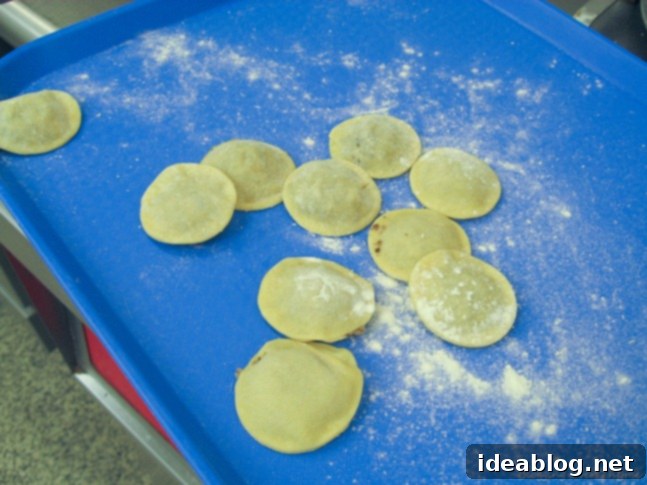
Luxurious Chive Cream Sauce
The mushroom ravioli was elegantly served with a decadent chive cream sauce, which we crafted from scratch. The sauce began by gently sautéing mushroom stems, fresh chives, minced garlic, and finely diced shallots in a generous knob of butter until aromatic. To this fragrant base, we added white wine, allowing it to reduce significantly until it was almost dry. This reduction intensifies the flavors and adds a nuanced complexity. Once the wine had reduced, we incorporated heavy cream, allowing it to gently simmer and reduce further until it achieved a luscious, coating consistency. The sauce was then strained through a fine-mesh chinois, ensuring a velvety smooth texture, and finished with a generous sprinkle of finely chopped fresh chives, which provided a burst of vibrant green color and a delicate oniony flavor. Though rich, this sauce was undeniably delicious and perfectly complemented the earthy mushroom filling of the ravioli.
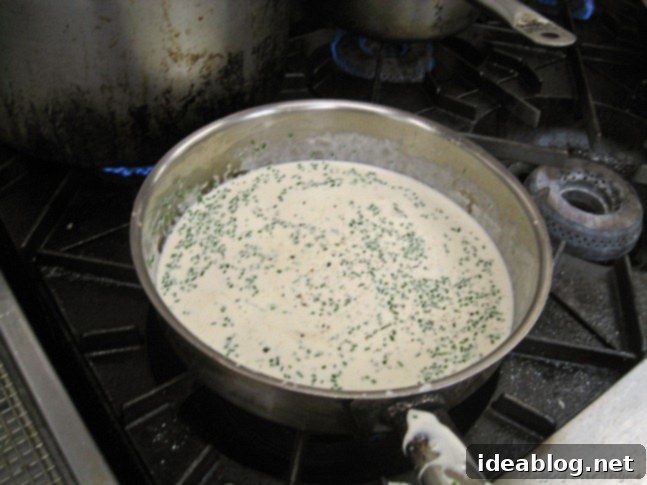
The combination of the tender, savory ravioli and the smooth, aromatic chive cream sauce was simply divine! After making pasta several times in culinary school, I can confidently say that the process is far simpler and more approachable than it often appears or sounds. The satisfaction of creating fresh pasta from basic ingredients is immense. If you’ve never attempted it at home, I wholeheartedly encourage you to give it a try sometime – you might surprise yourself with how easy and rewarding it is to make your own delicious pasta.
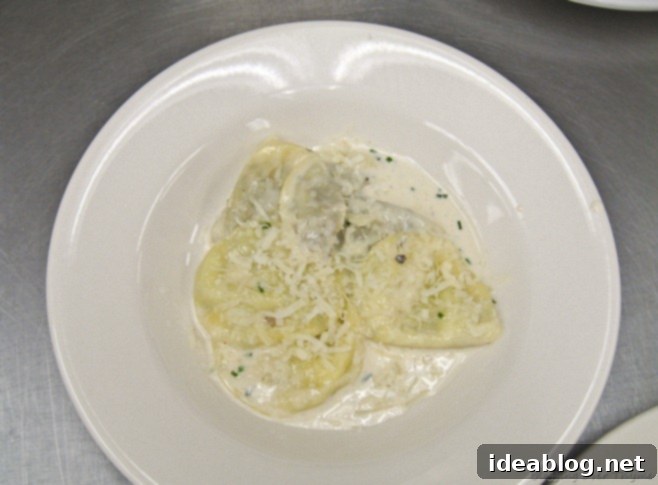
Sweet Ending: A Tangy Key Lime Tart
No culinary school day is complete without a delightful dessert, and our offering was a beautifully crafted key lime tart. This classic dessert struck a perfect balance between refreshingly tart and indulgently rich. Our graham cracker crust featured a delightful twist: the addition of ground almonds, which imparted a subtle nuttiness and a more refined texture compared to a standard crust. The filling, a vibrant key lime curd, was made with freshly squeezed key lime juice, offering that signature bright and zesty flavor. To achieve its silky-smooth consistency and perfect set, we incorporated softened gelatin before carefully folding in a quantity of lightly whipped cream. This final step lightened the curd, giving it an ethereal quality. Unfortunately, after sampling so many delicious savory dishes for lunch, I was incredibly full and could only manage a small taste of the tart. However, even that small bite confirmed its exceptional quality – truly a delicious and expertly made dessert.
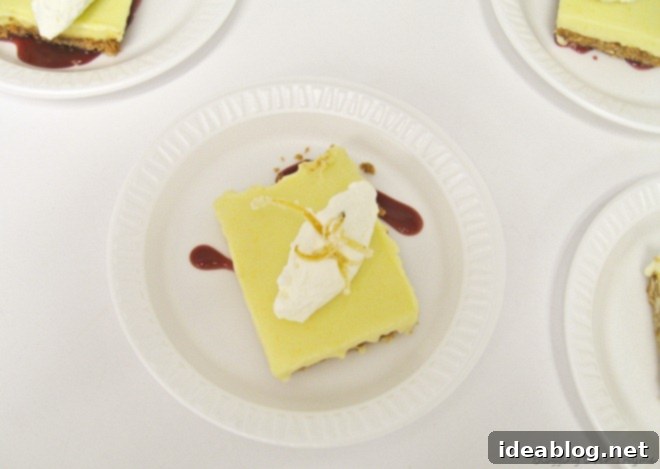
A Glimpse into Pastry Arts: The Hors D’oeuvres Buffet
After we completed our lunch and tidied our stations, we had the exciting opportunity to visit the Phase I pastry students’ Hors D’oeuvres buffet. This grand display was the culmination of their intensive week-long project, showcasing their skills in creating savory dishes, a challenging departure from their usual sweet repertoire. I could sense that many of them felt a bit rattled by the shift to savory applications, but their hard work and creativity were evident in every dish. At that point, I was so delightfully stuffed from our own substantial lunch that I could do nothing more than admire their impressive spread. It was a visual feast, brimming with a vast array of delectable bites.
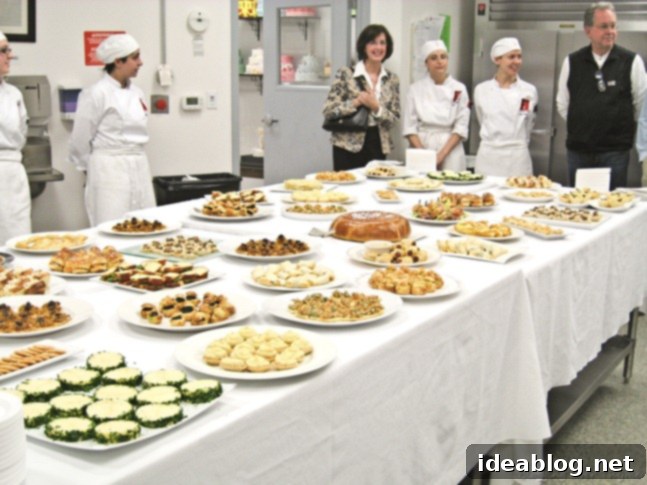
The buffet boasted approximately 20 different dishes, offering an incredible variety for discerning palates. The selection ranged from savory spanakopita and classic sliders to gourmet mini sandwiches, flavorful mini samosas, comforting chicken pot pies, and elegant savory tarts, among many other innovative creations. It was inspiring to see the diverse applications of pastry techniques in a savory context and a testament to the versatility of culinary arts students.
Stepping Towards the Future: My First Externship Meeting
Following our kitchen cleanup and the exciting hors d’oeuvres viewing, I headed off to my very first externship meeting. This was a significant milestone, marking the beginning of my transition from classroom learning to real-world culinary experience. I already have a few esteemed restaurants in mind that align with my culinary interests and career aspirations. Over the next couple of weeks, I will be reaching out to these establishments to inquire about “stages” – essentially working interviews where aspiring chefs gain hands-on experience in a professional kitchen environment. The prospect of these stages is both nerve-wracking and incredibly intimidating, given the high-pressure nature of professional kitchens. However, it is also undeniably exciting to imagine putting my acquired skills to the test and learning from experienced industry professionals. I look forward to sharing more details and insights as I progress further into this pivotal externship process.
Nearing the Finish Line: Phase I Conclusion
Next week signifies the culmination of our intensive journey through Phase I of culinary school. This final week will be packed with our third practical exam, where we will demonstrate our mastery of various culinary techniques, and a comprehensive theory exam, testing our knowledge of culinary principles and food science. It’s truly hard to believe how quickly the time has flown by. The lessons learned, the skills acquired, and the friendships forged during Phase I have been invaluable, preparing us for the next exciting chapter in our culinary education and careers.
